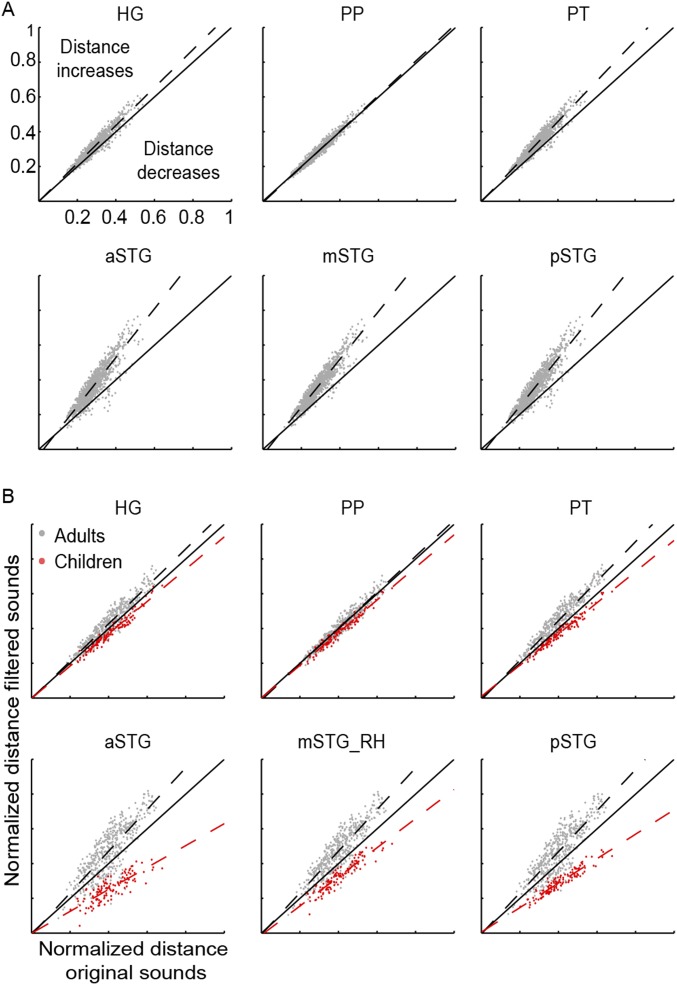Fig. S7.
Discriminability analysis of speech and vocal sounds. For the indicated ROI, each panel shows the relation between pairwise distances of speech (A) and nonspeech vocal (B) sounds based on their original modulation representations (x axis) and on the representations obtained by weighting the original representations based on ROI-specific MTFs (y axis). These latter representations were calculated as the point-wise product between the original modulation content and the group-average reconstruction accuracy MTF of individual ROIs. The normalized distance between sound pairs was defined as the Euclidean distance between sounds in the modulation space, divided by the maximum pairwise distance obtained for the condition of interest (i.e., projected, original). The dashed line is the fitted line, and the solid line represents the diagonal. Points lying on the diagonal designate pairs of sounds whose normalized relative distance does not change after the weighting operation. A shift above (below) the diagonal indicates that the filtering operation increases (decreases) the normalized relative distances between sounds.

